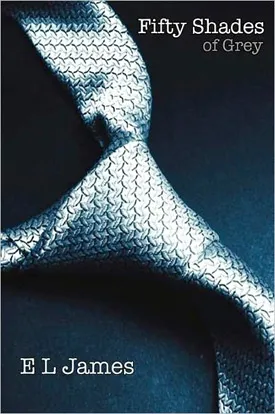Table of Contents
3:30
The Academic Council Report opened with a recap of Faculty Senate’s activities over the past year from its chair, Professor Goldsmith. She reported on the major reports that it heard and its decisions for the year.
3:39
Hennessy began speaking, emphasizing first the hope that Stanford’s endowment will continue to recover nicely. He then began speaking about how his term has included a “Third Stone Age” of transforming the campus via new buildings.
3:41
Hennessy briefly loses his clicker. Subsequently finds it in his pocket, where he suspected that it might be.
Hennessy also tells the story that it turns out that Stanford could have been a museum, but instead the Stanfords were told that they should have a university instead by the President of Harvard.
A key aim of the university’s building plan is to return to using open spaces and using Serra as a key axis of campus.
3:45
Hennessy compliments the gorgeous (seriously, it is) Gunn Building (including John Gunn, who is in attendance). He then discussed the new GSB buildings and how the new campus of the business school was constructed much more quickly than anticipated as a result of the generosity of GSB alumni.
Hennessy emphatically argues that we will never again build aboveground parking garages.
The Knight Management center is sustainable (elite Platinum status, in fact).
3:49
The Bing Concert Hall ground-breaking is discussed, including a story about an elite violinist that told Hennessy that he should be ashamed of Stanford’s performance facilities. It looks like it’s going to be gorgeous. And it’s on the same axis as the museum.
3:52
Hennessy turns to a discussion of student housing and the law school. Munger is the single largest housing project undertaken by Stanford since Wilbur in the 1950s (brief exchange between Hennessy and an audience member about the date). With Munger, 2/3 of graduate students live on campus, improving the community. This replaces graduate students camping out in the quad after rents soared in surrounding communities.
With the construction of Munger, Crothers and Crothers Memorial were brought into use for undergraduates, allowing some unstuffing.
3:55
There is also an effort to integrate Munger’s open spaces with the law school. The law school clinics will also gain additional space as a result of these changes (presumably also thanks to the demise of Kresge).
3:58
Two major goals on campus: incredible academic experience and keeping the flavor of campus architecture as well.
Walk to new engineering quad begins.
4:15
Arrive at the new engineering quad (now inside the Jen-Hsun Huang Center). During the walk, this reporter spent most of the time trying to catch up to Hennessy’s long strides. Finally reached the front and heard some discussion of a “national unicycling champion.” This reporter could not resist mentioning that Ryan Woessner is a multiple-time world unicycling champion and did so. Not sure whether this information was considered valuable.
Internet has not yet been activated in the new building. Live blog over. Regular blog continues.
4:18
Hennessy begins speaking about the new engineering quadrangle, which will be connected by a series of arcades. We are now in Phase II of construction, working on new buildings as part of the quadrangle.
Hennessy cheers the future destruction of the last of the 1960s era “slum-like” buildings (the Gibbston building?). Laughter ensues.
4:23
Hennessy discusses the energy efficiency gains of Y2E2. Alex Katz might disagree.
Hennessy also emphasizes the importance of connectivity with the Serra Mall axis and discusses the construction of the new Medical School buildings including the Lorry I. Lokey Stem Cell Research Building and the Li Ka Shing Center for Learning and Knowledge.
He also discusses te importance of the Clark Center as a collaborative center.
4:26
The Li Ka Shing Center will serve as the Medical School’s front door and provide high tech, great teaching facilities (Hennessy describes some of the old teaching spaces as akin to 1830s autopsy rooms).
The Lorry Lokey building will be one of the largest stem cell research facilities in the country, if not the world.
4:28
The Panama Mall is a historic part of campus, but there has been some difficulty in transforming those buildings into high tech labs. Hennessy said that the new Peterson lab is a model for how to transform.
The new Automative Innovation Facility is built to replace the old automative center that built Stanley, which one the first DARPA automotive challenge (130 miles in the desert with no driver). Stanley Jr. got second in the DARPA city challenge (including a successful four-way stop).
4:32
Hennessy discussed how Stanford became a great university: excellence in everything it does. Facilities only support excellence. The faculty and students create that excellence.
10 faculty were elected to the National Academy of Arts and Sciences, 5 to the National Academy of Science, 5 to the National Academy of Medicine, and 2 to National Academy of Engineering. One National Priestly Medal. Two awards to Linda Darling-Hammond. Professor Ehrlich received another award. Professor Marty Hellman won the 2010 Richard Hamming Medal.
The class of 2014 had a 7.2 percent admit rate and is on track to have the highest yield on record.
Varun Sivaram (albeit not named) got a shout out for his win of Truman Scholarship. 3 Soros Fellowships. 1 Rhodes. 1 Mitchell. 2 Gates. 4 Marshall.
4:38
Q&A begins. A professor asks about Old Chem. Hennessy said that his first strategy was to find an alumnus who loved Old Chem, but that failed. They will eventually build up the reserves to revamp it.
Another person asks about BOSP infrastructure, particularly about Beijing. The Beijing campus is being built on the grounds of Peking University (very historical part of campus). It’s theoretically a restoration, but all that is left to restore is a piece of rubble that is 20’x18″.
4:42
Is there a plan to increase to size of Medical School classes? Not that Hennessy is aware of, but there has been an increase in post-graduate medical workers (although the increase in the number of students who take a year off to do research creates that appearance a bit).
Another question was about the construction of a new hospital, which requires a new permit from Palo Alto. The old part of the hospital will eventually be phased out once the new hospital is built. The cost of building hospitals is “simply staggering.” Approximately $1-$2 million per bed, particularly because of the work that Stanford does.
4:46
A subsequent question was about stable electricity production. Stanford was one of the first university to use cogeneration and Stanford may switch to a hot and cold water system instead of a steam system in the future. This would require a lot of repiping, thus requiring a lot of time.
4:49
Another question is about increasing faculty and student diversity. The graduate student body is shifting more than the undergraduate population, as there is no longer a majority ethnic group on campus. At the graduate level, the number of international students has continued to increase to about 1/3 today. In the hard sciences and engineering, it is about 50 percent.
The real challenge is in faculty diversity. There are gradually getting to be more women and ethnic minorities on the faculty, although not always as fast as would be optimal.
Meeting adjourned by Hennessy.






